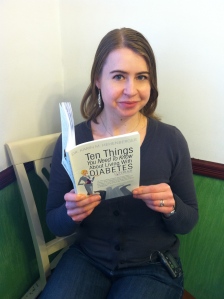Today marks the ten year anniversary since having my entire colon removed, and the first step towards regaining control over my health. I was diagnosed with ulcerative colitis at age 16 after many years of unexplained symptoms, pain, and feeling that no one doctor took my symptoms seriously. Finally at age 16 I received an answer. This started a new chapter of life: “what now- lets live with a chronic disease.”
I managed well for about 6 months after diagnosis with first level medications, but soon symptoms started to creep back: diarrhea, blood in stool, horrible bouts of pain, anemia, amongst other things no teenager wants to be dealing with. That’s when I was introduced to corticosteroids, a trauma in itself. While they can help manage the pain and symptoms- the side effects were terrible. I was told to start them after my senior year high school photos as my face would “puff up like a chipmunk,” which it did. It seemed from that point forward, all medications I tried led to some help with disease symptoms, but extreme side effects that seemed even more terrible to me. Acne, chipmunk faced insomniac, who still had to run to the bathroom all the time did not scream you are managing your disease well, and your quality of life is better. Quality of life was extremely poor and while my health was very poor, I was also extremely unhappy in how I was living my life. Having to leave college, unable to go out with friends, living in pain, feeling ugly and unhappy was not how I planned life to feel at 18 years old. I sound very negative, but that was the world I was living in. It came to a point where medications were not even controlling my UC, and the idea of surgery was introduced to me. While the thought of having my colon removed sounded like an alien operation, it was in fact life changing. I am so grateful for my parents and how supportive they were during this time. My parents were instrumental in getting me through these dark days, and have continued to support me since. And luckily, with surgery life took a positive direction….
I was a candidate for J pouch surgery and a few days prior to my 19th birthday, I had the first part of the surgery performed. With ulcerative colitis, one option that patients with severe unremitting disease have is getting their colon removed. By removing the colon, also known as the large intestine, the surgeon then fashions the small bowel in a reservoir to hold waste. This allows for the continuation of “normal” bowel movements. This surgery is usually done in 2 or 3 steps, and typically involves wearing a temporary ileostomy. An ileostomy is when a piece of your small bowel is looped outside of the abdominal wall, and where you will wear a small plastic pouch attached to your abdominal wall to empty waste into. While scary and with a lot of unknowns about the outcome of surgery- it was the best decision ever made in my life. Thank you Dr. John Proccacino for changing, saving, and giving me back my life!
Since that surgery- I have been the healthiest and felt the best I have ever felt in my entire life. In the past 10 years I have been able to go back to college, get my masters degree, have wonderful jobs, party and live like a 20 something year old with friends, and importantly found my path and passion in life. My take away from my experience: you should never feel alone in what you are going through, and always search for help in improving the quality of your life. I was someone who did not share what I was going through with anyone, and asked my parents to keep things quiet as well. I was embarrassed of my disease and I was embarrassed of being different. Now I understand the importance of connecting, and I hope no one goes through an experience like this alone.
My experiences drove me to get my masters in mental health counseling, as I feel strongly that mental health is greatly affected by having a chronic disease. Since then, I have worked with the Crohn’s & Colitis Foundation at their national headquarters, helping patients understand their disease and connecting them with local resources. I now am working with Lyfebulb as I feel strongly aligned with our mission to help connect, inspire and impact those affected by chronic disease and really importantly- work to help improve quality of life.
Quality of life is lost for so many with chronic disease. Different diseases affect many different aspects of ones life, but there is common ground for us to all connect upon. I hope as I move forward with our work at Lyfebulb, I can learn more about what others are going through with Type 1 Diabetes, with different cancers, with MS, etc., and from there come together with ideas and solutions to help improve quality of life for patients. We need cures, and these will happen in the long term, I am sure of it. To help now- we must work to improve quality of life.
This day and this week I will celebrate my 10 year post surgery anniversary and my 29th birthday. I am so grateful for every wonderful day, and even for the experience of having ulcerative colitis. It taught me to appreciate life at a much younger age, to really love those around me, and to live happily.
Cheers to an improved quality of life!










